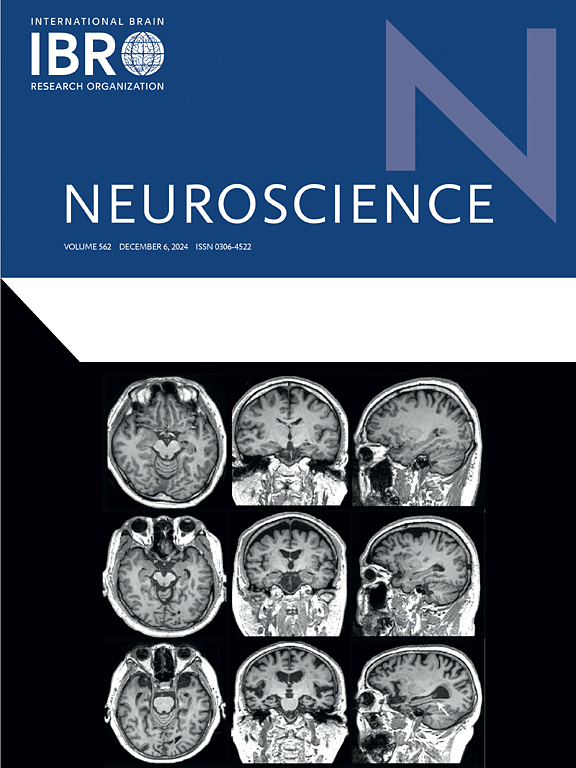神经类固醇作为治疗难治性抑郁症的新疗法:机制和临床潜力。
IF 2.8
3区 医学
Q2 NEUROSCIENCES
引用次数: 0
摘要
难治性抑郁症(TRD)是重度抑郁症(MDD)的一种严重且持续的亚型,对至少两种不同类型的抗抑郁药没有反应。鉴于常规治疗的局限性,神经类固醇因其快速和多方面的作用机制而成为有希望的替代品。神经类固醇如异孕酮、孕烯醇酮和脱氢表雄酮(DHEA)调节关键的神经递质系统,包括γ -氨基丁酸(GABA_A)和n -甲基- d -天冬氨酸(NMDA)受体,增强抑制传递和促进突触可塑性。它们调节下丘脑-垂体-肾上腺(HPA)轴,减轻压力相关的神经毒性,恢复神经化学平衡。临床前研究已经证明了神经类固醇在扭转慢性应激啮齿动物模型的抑郁样行为方面的功效,而临床试验强调了它们具有快速和持续的抗抑郁作用的潜力。值得注意的是,FDA批准布雷沙诺酮治疗产后抑郁症,强调了基于神经类固醇的治疗的转化潜力。然而,必须解决诸如有限的生物利用度、长期安全性问题和监管障碍等挑战,以优化其临床应用。本文综述了神经类固醇在TRD中的治疗潜力,讨论了其机制、临床证据和未来发展方向。研究结果支持将基于神经类固醇的治疗纳入TRD管理,为对传统抗抑郁药无反应的患者提供了新的希望。这篇综述独特地强调了神经类固醇提供的范式转变,超越了传统的单胺假说,并将其定位为能够解决TRD复杂神经生物学问题的新型多靶点治疗方法。本文章由计算机程序翻译,如有差异,请以英文原文为准。

Neurosteroids as emerging therapeutics for treatment-resistant depression: Mechanisms and clinical potential
Treatment-resistant depression (TRD) is a severe and persistent subset of major depressive disorder (MDD) that remains unresponsive to at least two different classes of antidepressants. Given the limitations of conventional treatments, neurosteroids have emerged as promising alternatives due to their rapid and multi-faceted mechanisms of action. Neurosteroids such as allopregnanolone, pregnenolone, and dehydroepiandrosterone (DHEA) modulate key neurotransmitter systems, including gamma-aminobutyric acid (GABA_A) and N-methyl-D-aspartate (NMDA) receptors, enhancing inhibitory transmission and promoting synaptic plasticity. They regulate the hypothalamic–pituitary–adrenal (HPA) axis, mitigating stress-related neurotoxicity and restoring neurochemical balance. Preclinical studies have demonstrated the efficacy of neurosteroids in reversing depressive-like behaviors in rodent models of chronic stress, while clinical trials highlight their potential for rapid and sustained antidepressant effects. Notably, the FDA approval of brexanolone for postpartum depression underscores the translational potential of neurosteroid-based therapies. However, challenges such as limited bioavailability, long-term safety concerns, and regulatory hurdles must be addressed to optimize their clinical application. This review explores the therapeutic potential of neurosteroids in TRD, discussing their mechanisms, clinical evidence, and future directions. The findings support the integration of neurosteroid-based treatments into TRD management, offering new hope for patients unresponsive to conventional antidepressants. This review uniquely highlights the paradigm shift offered by neurosteroids, moving beyond the traditional monoamine hypothesis, and positions them as novel, multi-target therapeutics capable of addressing the complex neurobiology of TRD.
求助全文
通过发布文献求助,成功后即可免费获取论文全文。
去求助
来源期刊

Neuroscience
医学-神经科学
CiteScore
6.20
自引率
0.00%
发文量
394
审稿时长
52 days
期刊介绍:
Neuroscience publishes papers describing the results of original research on any aspect of the scientific study of the nervous system. Any paper, however short, will be considered for publication provided that it reports significant, new and carefully confirmed findings with full experimental details.
 求助内容:
求助内容: 应助结果提醒方式:
应助结果提醒方式:


